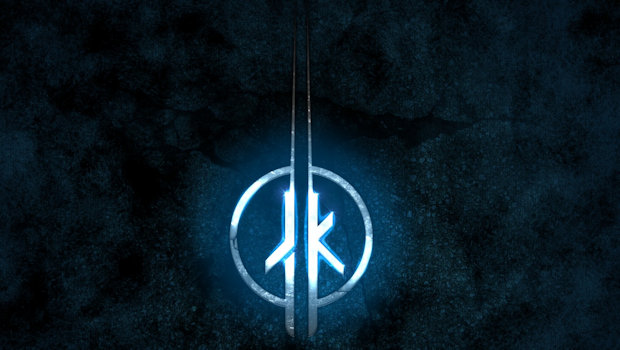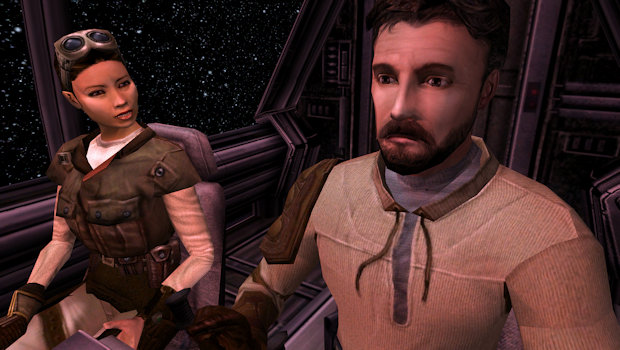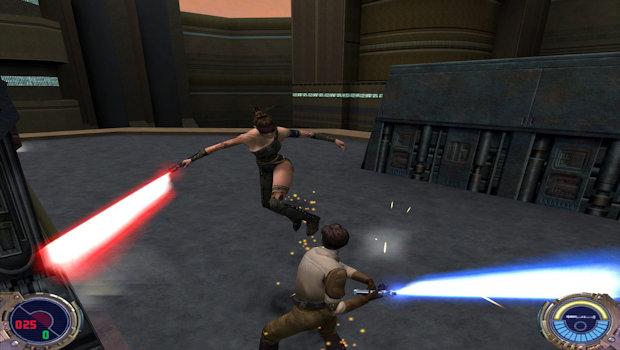Coming four years after the release of Star Wars Jedi Knight: Dark Forces II, Star Wars Jedi Knight II: Jedi Outcast does away with the Dark Forces name that started the series off. It’s probably for the best as because, let’s be honest, calling this sequel Jedi Knight II: Dark Forces III – Jedi Outcast would have just been absurd.
Awkward naming aside, Jedi Knight II picks up a couple years after the events of Mysteries of the Sith, the expansion to the previous game. Series protagonist Kyle Katarn has given up being a Jedi due to his twisted experience with the dark side of the force and has returned to his mercenary roots running missions for the New Republic. He and Jan meet up with a dark Jedi named Dessan that is intent on restoring power to the Empire and taking over as a new emperor. Of course, Kyle will have to take down Dessan and his Remnant faction, but this time he’ll get a little help from the likes of Luke Skywalker and Lando Calrissian (voiced by none other than Billy Dee Williams).
Like Mysteries of the Sith, Jedi Outcast has no live-action cutscenes. However, unlike the Jedi Knight expansion, Jedi Outcast has well cut-together in-game scenes, decent voice acting, and a relatively solid story to experience. By today’s standards, it probably wouldn’t pass muster, but for a 15 year old game, it does the job and mostly held my attention.
With Jedi Outcast, Raven Software took over development duties of the franchise and as such, this game plays a bit differently than the LucasArts-developed titles. The biggest difference in this game is the speed at which the game moves. In the past three entries of the series, the game played super fast, like a Doom and Quake clone. Jedi Outcast is noticeably slower, and, coming directly from Mysteries of the Sith, it took some getting used to.
The slower pace actually has benefits when Kyle begins to utilize his lightsaber. In Jedi Knight and its expansion, lightsaber fights were spastic encounters that didn’t feel particularly great even if they were fun. Jedi Outcast makes lightsaber fighting feel like a strategic battle that generally can’t be won by attacking by button-smashing.
Getting Kyle’s lightsaber takes a little while as he has given up being a Jedi. About 20% of the game actually is played without a lightsaber or force powers. Once Kyle has his powers and saber back, things pick up. He’ll face off against the standard assortment of scum and villainy but also dark side force wielders that will put his lightsaber and force power skills to the test.
At times Jedi Outcast goes a little overboard on these force enemy encounters but their inclusion is a welcome adjustment after the virtual lack of them in Mysteries of the Sith. And they provide ample opportunity to really play with your lightsaber, something that even Jedi Knight didn’t do expressly well outside of its unique boss fights.
Jedi Outcast doesn’t have as many memorable boss fights as Jedi Knight, yet but there are a couple that do work well and are generally more fun to play than those in Jedi Knight. Some of this is because the mechanics that Raven has introduced for lightsabers and force powers just work a little better than its older siblings. But I think most of it lies in the fact that Raven’s design doesn’t ever feel cheap and unfair and they are all designed around making Kyle, and by direct control, the player, feel powerful.
This feeling of solid design to empower the player extends to the game’s level design as well. Jedi Outcast is by far the most straight-forward of the series so far. This isn’t to say there aren’t puzzles to be solved that might leave you scratching your head, but none of them feel illogical once you do solve them. It seems to be the right mix of guided experience and smart challenge.
A lot of this is an improvement in every way over the past entries in the series. One area that I found disappointing was how it handled series mainstay Jan Ors. Jan has, since the beginning with Dark Forces, been Kyle’s partner. She’s been a strong character throughout and in many ways his equal. Jedi Knight saw her become a damsel that needed saving, which to a large degree rubbed against type. But this is a pretty common trope in games and it didn’t really bother me at the time nor on my recent playthrough. However, Jedi Outcast again sees Jan being cast as a plot device rather than as the strong character she is. Frankly, it is lazy writing.
That laziness with the narrative holds back Jedi Outcast from being the best game in the series. Still, it is a super strong entry in the series that might actually be the easiest one to recommend to newcomers to the series due to its better compatibility with newer computers.


